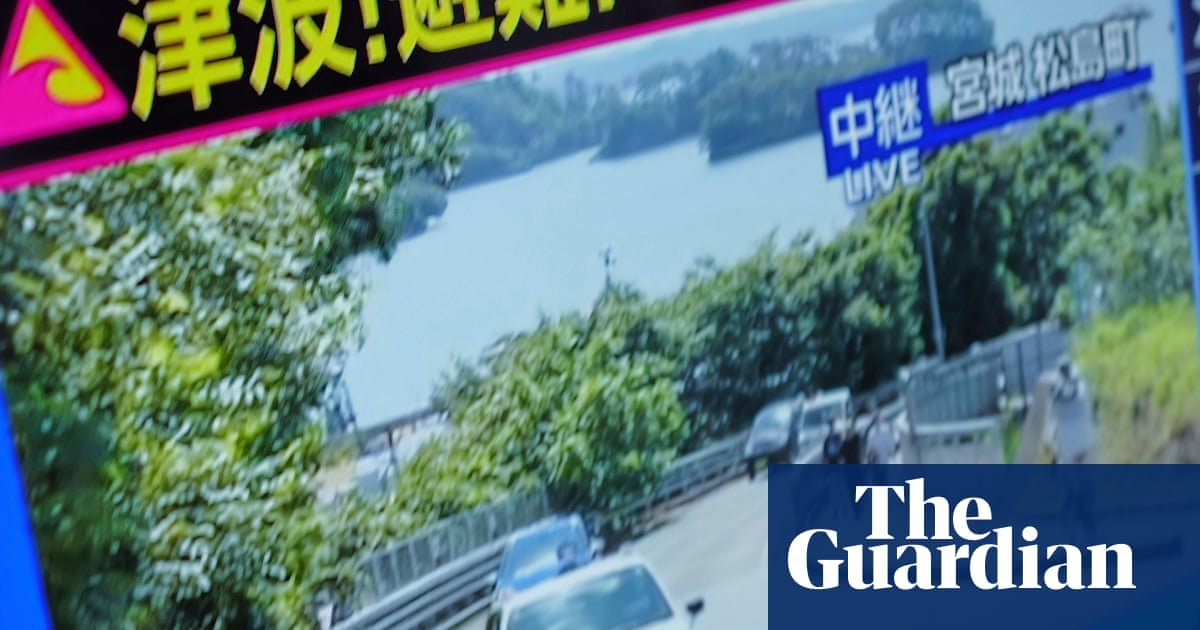A powerful 8.7-magnitude earthquake has triggered a series of tsunami warnings and evacuation orders stretching across Russia, Japan, the US west coast and parts of the Pacific, after the shallow quake hit near Russia’s Kamchatka Peninsula on Wednesday.
The earthquake was the strongest in the region since 1952, according to the Russian Academy of Sciences, and struck at a depth of 19.3km (12 miles). It was centred 126km (80 miles) east-southeast of Petropavlovsk-Kamchatsky, a city along Russia’s Avacha Bay, the US Geological Survey said.
Kamchatka governor Vladimir Solodov described the quake in a post on Telegram as “serious and the strongest in decades of tremors”. A kindergarten in the area had been damaged, he said.
A tsunami with a height of 3 to 4 metres was recorded in parts of Kamchatka, Sergei Lebedev, regional minister for emergency situations said, urging people to move away from the peninsula shoreline.
The US Tsunami Warning System issued a warning of “hazardous tsunami waves” within the next three hours along some coasts of Russia, Japan, Alaska and Hawaii. A tsunami watch was also in effect for the US island territory of Guam and other islands of Micronesia. The US Tsunami Warning Center said waves as high as 3 metres could also hit Ecuador, while sirens blared in Hawaii warning people to leave coastal areas.
Workers at the Fukushima nuclear plant, which went into meltdown after being hit by a tsunami in 2011, have been evacuated, according to Agence France-Presse, which reported that “no abnormality” had been observed at the site.
Yoshimasa Hayashi, Japan’s chief cabinet secretary, said: “Those near the coast should evacuate immediately to higher ground or safe buildings in the areas covered by the tsunami warning from Hokkaido to Wakayama Prefecture [hundreds of kilometres to the south]. Please be aware that after the initial wave, second and third waves of tsunamis can be even higher.”
The quake struck about 250km (160 miles) away from Hokkaido, Japan’s northernmost of the country’s four big islands, and was felt only slightly, according to Japan’s NHK television. The US Geological Survey said it hit at a depth of 19.3km (12 miles).
Factory workers and residents in Japan’s northern Hokkaido evacuated to a hill overlooking the ocean, footage from broadcaster TBS showed.
“Please evacuate quickly. If you can move quickly to higher ground and away from the coast,” a newscaster on Japanese public broadcaster NHK said.
A tsunami warning also was extended to the US state of Hawaii, with the National Weather Service’s Pacific Tsunami Warning Center saying a tsunami from the quake had been generated that could cause damage along the coastlines of all the Hawaiian islands.
There was no immediate information from Russia about how Kamchatka was affected.
The National Tsunami Warning Center, based in Alaska, issued a tsunami warning for parts of the Alaska Aleutian Islands, and a watch for portions of the west coast, including California, Oregon, and Washington, and Hawaii.
The advisory also includes a vast swath of Alaska’s coast line, including parts of the panhandle.
A University of Tokyo seismologist Shinichi Sakai told NHK that a distant earthquake could cause a tsunami that affects Japan if its epicentre is shallow.
Japan, part of the area known as the Pacific ring of fire, is one of the world’s most quake-prone countries.
Earlier in July, five powerful quakes – the largest with a magnitude of 7.4 – struck in the sea near Kamchatka. The largest quake was at a depth of 20km and was 144km (89 miles) east of the city of Petropavlovsk-Kamchatsky, which has a population of 180,000.
On 4 November 1952, a magnitude 9.0 quake in Kamchatka caused damage but no reported deaths despite setting off 9.1m (30-foot) waves in Hawaii.
